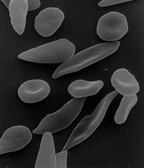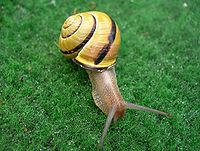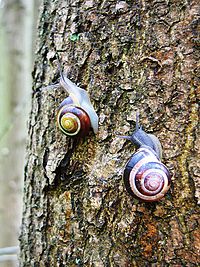Mechanisms
Heterozygote advantage


In heterozygote advantage, or heterotic balancing selection, an individual who is heterozygous at a particular gene locus has a greater fitness than a homozygous individual. Polymorphisms maintained by this mechanism are balanced polymorphisms. [4] Due to unexpected high frequencies of heterozygotes, and an elevated level of heterozygote fitness, heterozygotic advantage may also be called "overdominance" in some literature.
A well-studied case is that of sickle cell anemia in humans, a hereditary disease that damages red blood cells. Sickle cell anemia is caused by the inheritance of an allele (HgbS) of the hemoglobin gene from both parents. In such individuals, the hemoglobin in red blood cells is extremely sensitive to oxygen deprivation, which results in shorter life expectancy. A person who inherits the sickle cell gene from one parent and a normal hemoglobin allele (HgbA) from the other, has a normal life expectancy. However, these heterozygote individuals, known as carriers of the sickle cell trait, may suffer problems from time to time.
The heterozygote is resistant to the malarial parasite which kills a large number of people each year. This is an example of balancing selection between the fierce selection against homozygous sickle-cell sufferers, and the selection against the standard HgbA homozygotes by malaria. The heterozygote has a permanent advantage (a higher fitness) wherever malaria exists. [5] [6] Maintenance of the HgbS allele through positive selection is supported by significant evidence that heterozygotes have decreased fitness in regions where malaria is not prevalent. In Surinam, for example, the allele is maintained in the gene pools of descendants of African slaves, as the Surinam suffers from perennial malaria outbreaks. Curacao, however, which also has a significant population of individuals descending from African slaves, lacks the presence of widespread malaria, and therefore also lacks the selective pressure to maintain the HgbS allele. In Curacao, the HgbS allele has decreased in frequency over the past 300 years, and will eventually be lost from the gene pool due to heterozygote disadvantage. [7]
Frequency-dependent selection
Frequency-dependent selection occurs when the fitness of a phenotype is dependent on its frequency relative to other phenotypes in a given population. In positive frequency-dependent selection the fitness of a phenotype increases as it becomes more common. In negative frequency-dependent selection the fitness of a phenotype decreases as it becomes more common. For example, in prey switching, rare morphs of prey are actually fitter due to predators concentrating on the more frequent morphs. As predation drives the demographic frequencies of the common morph of prey down, the once rare morph of prey becomes the more common morph. Thus, the morph of advantage now is the morph of disadvantage. This may lead to boom and bust cycles of prey morphs. Host-parasite interactions may also drive negative frequency-dependent selection, in alignment with the Red Queen hypothesis. For example, parasitism of freshwater New Zealand snail (Potamopyrgus antipodarum) by the trematode Microphallus sp. results in decreasing frequencies of the most commonly hosted genotypes across several generations. The more common a genotype became in a generation, the more vulnerable to parasitism by Microphallus sp. it became. [8] Note that in these examples that no one phenotypic morph, nor one genotype is entirely extinguished from a population, nor is one phenotypic morph nor genotype selected for fixation. Thus, polymorphism is maintained by negative frequency-dependent selection.
Fitness varies in time and space
The fitness of a genotype may vary greatly between larval and adult stages, or between parts of a habitat range. [9] Variation over time, unlike variation over space, is not in itself enough to maintain multiple types, because in general the type with the highest geometric mean fitness will take over, but there are a number of mechanisms that make stable coexistence possible. [10]


